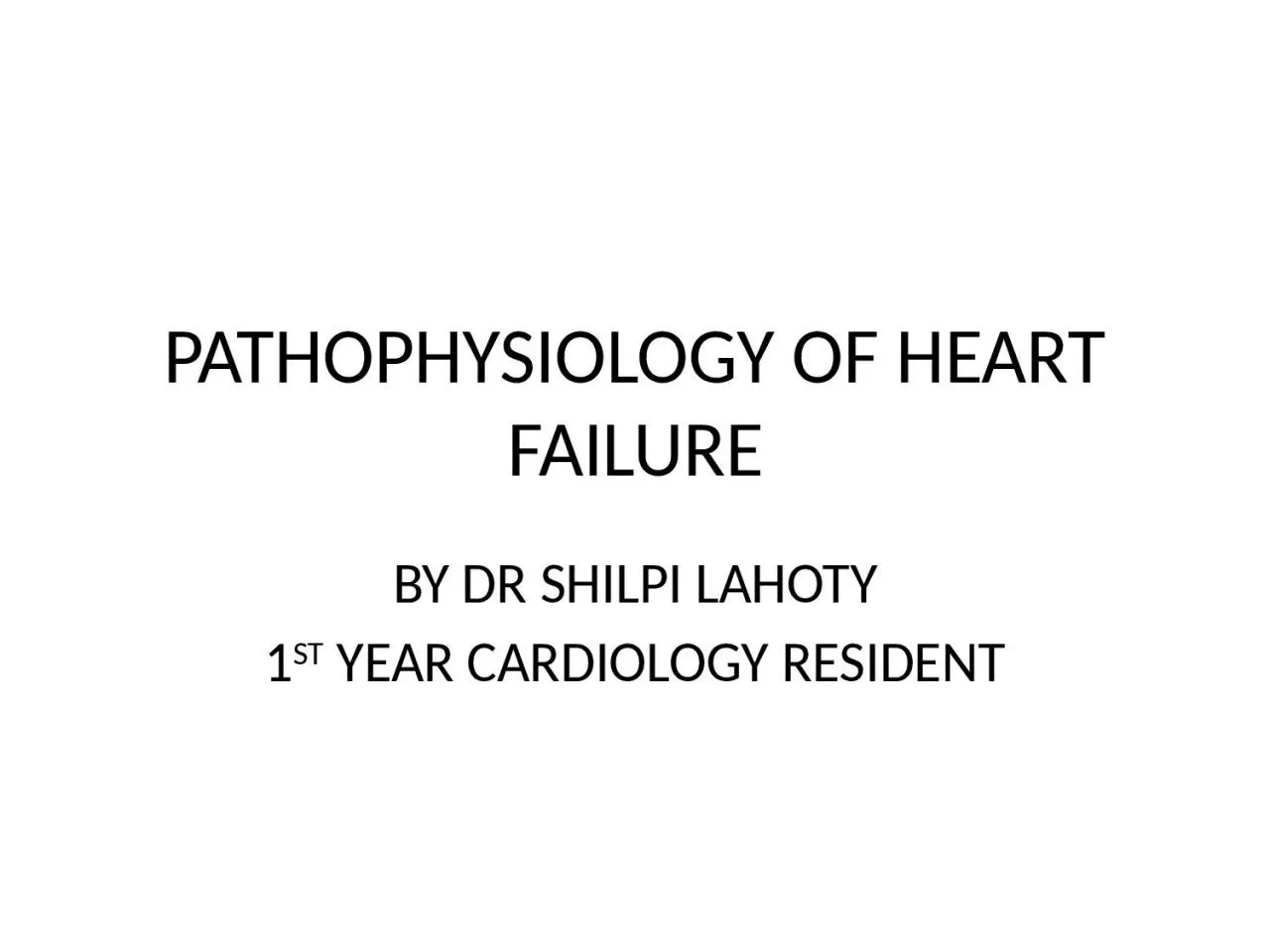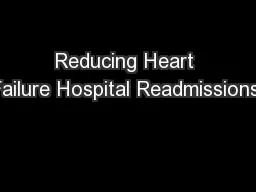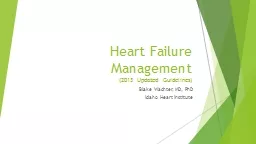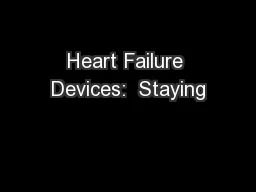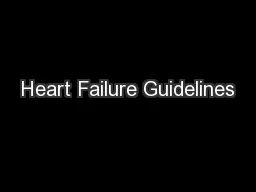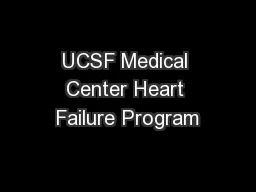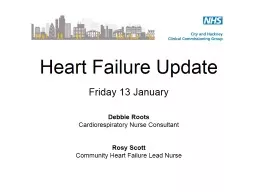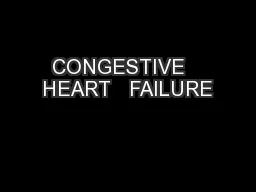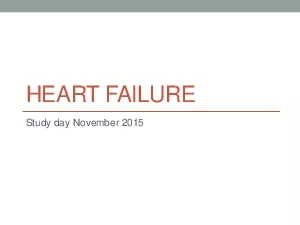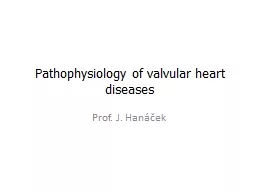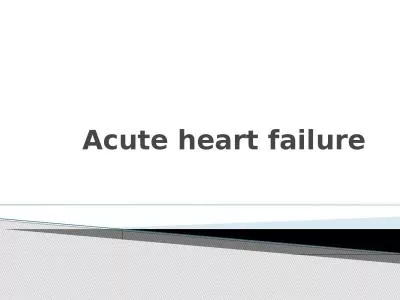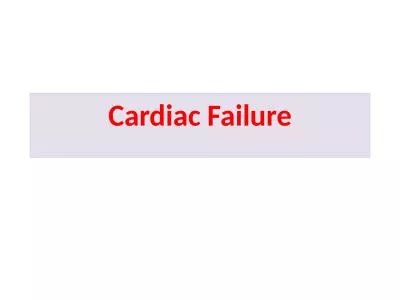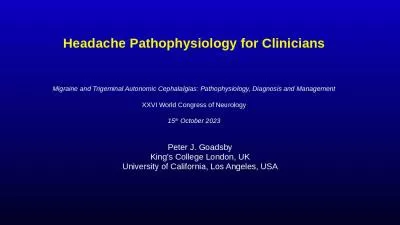PPT-PATHOPHYSIOLOGY OF HEART FAILURE
Author : naomi | Published Date : 2024-01-29
BY DR SHILPI LAHOTY 1 ST YEAR CARDIOLOGY RESIDENT PATHOGENESIS INDEX EVENT abrupt like MI insiduous like pressure or volume overload or
Presentation Embed Code
Download Presentation
Download Presentation The PPT/PDF document "PATHOPHYSIOLOGY OF HEART FAILURE" is the property of its rightful owner. Permission is granted to download and print the materials on this website for personal, non-commercial use only, and to display it on your personal computer provided you do not modify the materials and that you retain all copyright notices contained in the materials. By downloading content from our website, you accept the terms of this agreement.
PATHOPHYSIOLOGY OF HEART FAILURE: Transcript
Download Rules Of Document
"PATHOPHYSIOLOGY OF HEART FAILURE"The content belongs to its owner. You may download and print it for personal use, without modification, and keep all copyright notices. By downloading, you agree to these terms.
Related Documents

